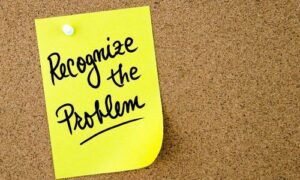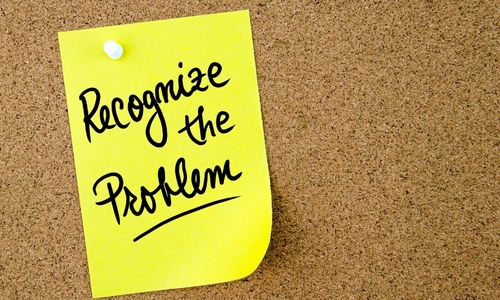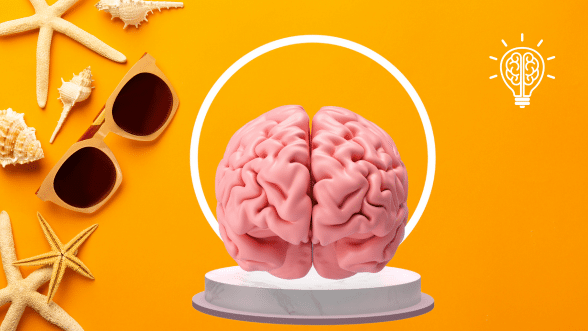
This is part of a blog series on our problem-solving paradigm RISE. Stay tuned for the rest of the series.
Executive Function skills are cognitive processes that help us plan and achieve goals. Problem solving is a skillset that allows people to overcome obstacles that are getting in the way of our success in achieving goals. Through this blog series, we hope to help you better understand the breakdown of the problem solving process, tapping into executive function skill development at the same time. We start with the first step of problem solving: Recognizing Problems. There are two main points we will explore:
- Why learning how to recognize problems is essential to developing independent problem solving skills?
- What executive functioning skills are needed to recognize problems?
Recognizing Problems as a Foundation for Problem Solving
If I told someone to hop on one foot every morning for 10 minutes, a natural question would be “why?” This simple question is a way for the person to better recognize the problem to be solved. If I told that person that it helps you to lose weight and maintain balance, they may respond with “But I don’t need to lose weight, and I have pretty good balance.” This would be a bad “solution” because it is not addressing a problem that the person is actually facing. So often, assistance is offered to people without a true grounding in the why, leaving that solution to be meaningless. Now, what if the solution actually does solve a problem for someone? Through years of coaching, I’ve had to confront this question often. Students’ should study well in advance of an exam, employees should organize and plan their days. Yet, providing these solutions does not lead to the long term maintenance of these strategies. People need to understand the why themselves. If a student is struggling in math class, and his/her goal is to do better in the class, we must guide them to recognizing the problem first and foremost. Are they doing all of the reading? Are they taking proper notes? Are they doing all of the appropriate homework? Do they know how best to study? The answers to these questions are definitely important for anyone supporting that student, but it is most important for the student to know the answers to those questions. That way they are able to be most informed with the next step of actually trying to solve the problem. Similarly, employees may be struggling to get all of their work done and have to work late, leading to problems at home. Is it because they are getting distracted while working from home? Are they bouncing from one task to another in a disorganized fashion? Are they spending too much time trying to figure out what to do next? Are they not asking for help when they are stuck? When teachers, coaches, managers, or colleagues provide solutions to those in need, it is like outsourcing the recognition of problems. People can become reliant on others for this skill, requiring assistance each time a problem happens. It is also essential because people are much more likely with following through with a solution or strategy, if they actually understand why they are doing it.
Executive Functions and Recognizing Problems
Three main executive function skills needed to recognize problems are: 1) metacognition, 2) cognitive flexibility, and 3) self-monitoring.
Metacognition
Understanding how you think is an important skill in preparing for and identifying problems as they occur. If you are struggling to stay focused, it is important to understand what makes your brain get distracted. You can try and learn from others, but it is important to understand that everyone’s brain works differently, so learning about yourself is often the first step to being able to recognize problems you are facing.
Cognitive Flexibility
The ability to look at situations through different lenses can help a person identify what the real problems are. This skill becomes especially useful as you move towards solving problems, but we first need to be able to view a problem through the proper light. Take, for example, struggling with waking up on time for work or school. The first “solution” is often to go to bed earlier or to set more alarms. What if the problem wasn’t that you didn’t have enough sleep or didn’t hear your alarm in the morning? We’ve worked with clients where the problem was really that clients were avoiding tasks. This ties into metacognition, but the ability to view the situation through a different lens can help individuals recognize true problems, allowing for the next step of identifying meaningful solutions.
Self-Monitoring
Assessing progress towards a goal is essential for recognizing problems. We like to think of problems as fires that need to be put out. Self-monitoring is the ability to detect the fires, whether that is like seeing smoke, having smoke detectors, or feeling for heat on a doorknob. People need to develop their own smoke detectors, because, the sooner we can identify there is a fire, the easier it will be to recognize the source of the problem.
It is so important to not skip this step in problem solving. We’ve heard from so many people “I’ve tried everything but nothing seems to work!” This is often because they are trying to solve problems that they don’t really have. By first structuring the recognition of problems as the first step, we can make sure that the solutions we try later in the process are targeted. Stay tuned for the next in our blog series; we will move on to Identifying Strategies and Solutions.





